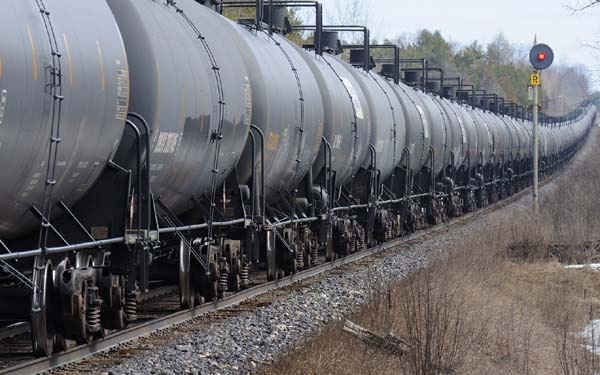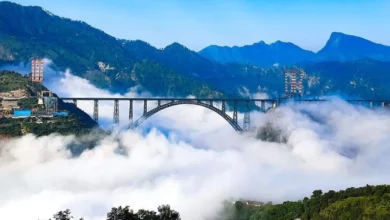
Is the privatization of the Railways and PSU really necessary?
It is known since long that India which caters to a population of about 135.26 crores, has one of the world’s largest railway network. However, it seems likely that this responsibility in its entirety might not linger for long. This might be the case for the PSUs (Public Sector Undertaking) as well. The one dream that is seen is, less of commotion, more of work distribution, excellent time management and improved services for the general public. So, is everything going to be the same as planned? Or are there minuscule loopholes that are yet to be uncovered?
Government’s assistance to the privatization of Railways and PSU, and why?
Recently the Government of India has decided to incorporate 151 new service trains from various private organizations into the system and will soon form policies about it. Although this is a small portion of the entire plan, this eventually marks the beginning of a new chapter. The Indian Railway system will have a segment of the private world of passenger train operations, co-existing along with the government ones.
The idea of privatization leads back to the proposal of privatization of six airports, and hence the government has decided to do the same with 50 railway stations.
Keeping aside some of the biggest companies and stakeholders like the State Bank of India, Punjab National Bank, other recently merged banks along with ONGC, Powergrid and LIC, GIC; the PM led mega privatization plan is suggesting the eliminated other companies to be sold to private organizations. According to the government, certain sectors which are: Banking, Fertilizing, Power, Mines, Oil and Gas, Minerals and Insurance will have a humongous amount of investors looking for an opportunity to enter into these unexploited areas. Along with all of these, plans are set to sell a few fertilizer companies. The Department of Investment and Public Asset Management is expecting reviews from 40 government departments to finalize the policy soon.
Niti Aayog, the policy think tank of the Government of India, has thought of this to be the best idea to draw the most of private investors and form a comprehensive plan of action for the collective evolution of the nation.
Now let’s segregate. What is the profit and loss value for the commoners in this?
Railways: Assets and liabilities
For those who are wondering, to find out the real deal, here are some facts-
The Need-
Considering that the railways cater to a broad public figure each day, it faces a lot of criticism on a daily basis. First is its uncertainty of the time of the arrival of trains. Punctuality has always been the number one criticism in the list. Secondly, its service providing mechanism is troublesome, be it about the food or cleanliness. Indian Railway Catering and Tourism Corporation (IRCTC) being the only on-board catering service, of the Indian Railways, face an enormous amount of criticism about its food and essentials. Lastly, the rise in the number of accidents, increasing each day, directly raises questions on the government and its effectiveness. Cross Subsidization that lingers upon the system is the reason for losses, all year round.
The obvious Pros-
According to Niti Aayog’s strategy for new India@ 75, with the privatization by the year 2022-23, 100% electrification of the broad gauge and the present 7km/day to 19 km/day, would soon be a reality. All such measures obviously point to the better infrastructure, safety measures and time management.
Better and increased usage of technology will be part of this growth. This implies a faster booking method, safe travelling and world-class travel experience.
Improvement in the quality of service will be notable. This would obviously mean cleaner platforms and better water supply and no more stinky toilets.
The notable Cons-
Limited coverage area is the one big concern for every analyst against this move. The Indian government never focused on profit and strived to connect the entire mainstream lands. However, private organizations are likely to not focus on the same agenda and will obviously lean towards profit margins, which they can extract only in populated areas. The less populated zones or regions will have less to no coverage at all.
A definite class distinction within the railways will be created. Lower-income groups will not be able to avail the high priced facilities of the profit houses.
Indian economy will be affected at large, as a considerable amount of the revenue collected from the railways directly upholds the industrial and trade sector. After privatization, that will be the most significant blow to the economy.
It is easier for a government with its extensive panel of workers and substantial mechanical system to run the Railways, each day 24×7 hours. However, this is not nearly possible for any organization to be able to handle such pressure. Hence the chances of errors are quite high.
PSUs: Pluses and Minuses
The benefits-
These are same as those of the railways. Increased efficiency, Less of work for the government, lack of any political argument or involvement, profit for the shareholders, increase in the competition and hence increase in gain, thereby, massive extraction of revenue. Monetization of assets to collect even higher revenue and new infrastructure is the motive.
This also, on second thought, is a short term view. So the government may think only in terms of its next election. Whatever that would suit the government to continue its legacy will be prioritized all the same. They will always choose projects that give them a boost for their approaching elections. Hence it will be easier to cut public sector investment rather than front line services.
The negatives-
The public service sectors won’t remain the same, given the involvement of private hands. It would be more like money printing machines rather than thinking and making efforts to improve the public comfort.
It goes without saying that, a monopoly over the arenas will also be seen. Private involvements are bound to set higher price value due to the rise in competition, to meet their profit target, which is only possible by exploiting the commoners.
The hardest blow will probably be on the revenue of the government that it received out of these areas. However, the cabinet approved the disinvestment of Bharat Petroleum Corporation Ltd.(BPCL), Shipping Corporation of India, along with four other PSUs.
Note:- The Britain government has already privatized railways, but due to no productive results, they are thinking of conversion.
Sreedharan, who is also known as the Metroman of India, refers to the idea as “Foolish” and one that is likely to fail. Similar to him, Subodh Jain, a former member of the railway board(engineering) deems the idea of privatization to be a useless change and also stating the insecurity of 9000 officers due to this decision. Students, aspirants of PSU jobs and analysts have given sour reviews to this decision. According to them, such fancy, high held vows are not going to be enough for the citizens. The PSU sector was in itself created to uplift the economy and boost the country out of slumber.
So, is it really the case that we could not learn from other countries? Or is our own system a lot more different than others to compare and that maybe the step taken is correct? But more importantly, how much will the general people gain from this epic conversion, during such tough times, is a real question of the hour.





Great info